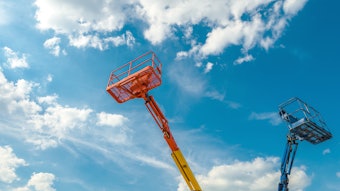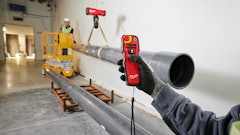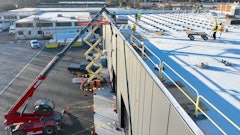
I have some wise words to share with you, Equipment Today readers, but they’re not mine. Heraclitus, the Greek philosopher, said, “Change is the only constant in life.” And as the last few years have shown us, that couldn’t be more true.
Fortunately for the aerial lift industry, the MEWP markets have embraced all the changes and recovered better than originally predicted, with most countries seeing markets and wider economies on course to recover to 2019 levels. MEWP markets continued to recover strongly after the pandemic in both 2021 and early 2022, despite clouds on the horizon caused by global uncertainty around geo-political upheavals and increased input costs, driven by rising inflation and the war in Ukraine, according to the latest analysis conducted for the International Powered Access Federation (IPAF) by Ducker.
MEWP fleet size in the US grew by 10% in 2021, as rental companies resumed their pre-pandemic investment strategies and attempted to prevent utilization rates from increasing extensively, according to the IPAF analysis.
"Overall US fleet growth was hampered by supply chain disruptions, as in other western markets, though the US was able to increase fleet size by more than 60,000 units," reads the July 2022 IPAF analysis. "This growth is forecast to continue but may be inhibited by inflationary pressures on the economy and trade issues, including a prohibitive tariff ruling on Chinese MEWP imports announced in 2021."
The good news is that this increased fleet investment positively reinforces the sudden rise of technologies, innovations, partnerships, products and numbers grabbing headlines throughout the aerial industry.
Some companies are planning to expand and grow throughout the rest of 2022 and into 2023. Take Manitou Group, for example, which plans to invest $80 million in its two North American production sites in Yankton and Madison, South Dakota to increase plant capacity and reaffirm the funding of research and development efforts. Indeed, Manitou Group's Q1 2022 net sales revenues indicated a 20% uptick in the Americas as of the end of March 2022, a solid 3% increase over its Q1 2021 net sales revenues in the Americas.
Elisabeth Ausimour, Manitou Group's products division president, says the company plans to increase production at the sites by more than 150 percent by 2026.
"We have an extremely promising outlook on our markets, which entirely substantiates these investments,” Ausimour says. “These new developments will enable us to absorb peaks in demand, permanently increase our production capacities and increase the safety of our workers, in particular by optimizing flow management."
The uncertainty of steel and energy prices during the Ukraine-Russia conflict may influence these investments, but Manitou's outlook is sunny.
Some companies are hoping to continue to expand on a successful 2021. For example, Hy-Brid Lifts closed out last year with record-setting sales. Compared to 2020, the scissor lift manufacturer’s global sales rose an impressive 99 percent, the company says, driven by a 140-percent growth in sales of the Push-Around Series.
“Hy-Brid Lifts has its share of manufacturing challenges due to ongoing material sourcing and labor shortages,” says Jay Sugar, Hy-Brid Lifts CEO and president. “Having American-made products gives us the flexibility to get creative with resources and overcome these obstacles. This enables us to maintain shorter lead times than our competitors and deliver the innovative solutions our customers need.”
Focusing on growth and change also means establishing new partnerships. Sinoboom BV recently signed a Memorandum of Understanding (MoU) with Trackunit making the telematics solutions specialist a preferred partner in the design, installation, and delivery of data services for Sinoboom equipment.
Their partnership aims to reduce machine downtime to an absolute minimum through remote diagnostics and proactive service planning, while the security of equipment is increased with machine location functions, including the ability to lockdown equipment remotely.
Two other industry leaders came together to advance the integration of robotics into aerial access equipment. JLG Industries and RE2 Robotics, a developer of intelligent mobile manipulation systems, combined forces to bring robotics to access equipment in an effort to enhance operator safety and productivity while working at heights.
“Robotic technologies have long been used in a variety of industries,” says Frank Nerenhausen, Oshkosh Corp. executive vice president and president of JLG Industries. “The productivity imperative, along with the COVID-19 pandemic, have accelerated the need for and adoption of robotic technologies beyond the factory floor. In fact, a large focal area in construction and industrial applications today is remote operation of equipment that keeps workers out of harm’s way.”
Jorgen Pedersen, RE2’s president and CEO, agrees, adding, “The future of work is here. Humans and robots are working more closely together, and the construction industry is no exception.”
Like I said earlier, the aerial industry is embracing change of all kinds. As we move forward through 2022 and beyond, expect to see aerial lift manufacturers, rental businesses, companies and individuals all continuing to push the envelope to embrace the shifting tides of construction.




























